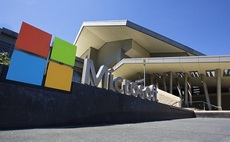Microsoft re-organisation to unite operating system teams as it posts full-year revenues up 12 per cent
Despite a tough year in which its Windows 8 operating system struggled to sell, the replacement of the CEO and the announcement of big job losses, Microsoft has posted a 12 per cent increase in rev...
To continue reading this article...
Join Computing
- Unlimited access to real-time news, analysis and opinion from the technology industry
- Receive important and breaking news in our daily newsletter
- Be the first to hear about our events and awards programmes
- Join live member only interviews with IT leaders at the ‘IT Lounge’; your chance to ask your burning tech questions and have them answered
- Access to the Computing Delta hub providing market intelligence and research
- Receive our members-only newsletter with exclusive opinion pieces from senior IT Leaders





















